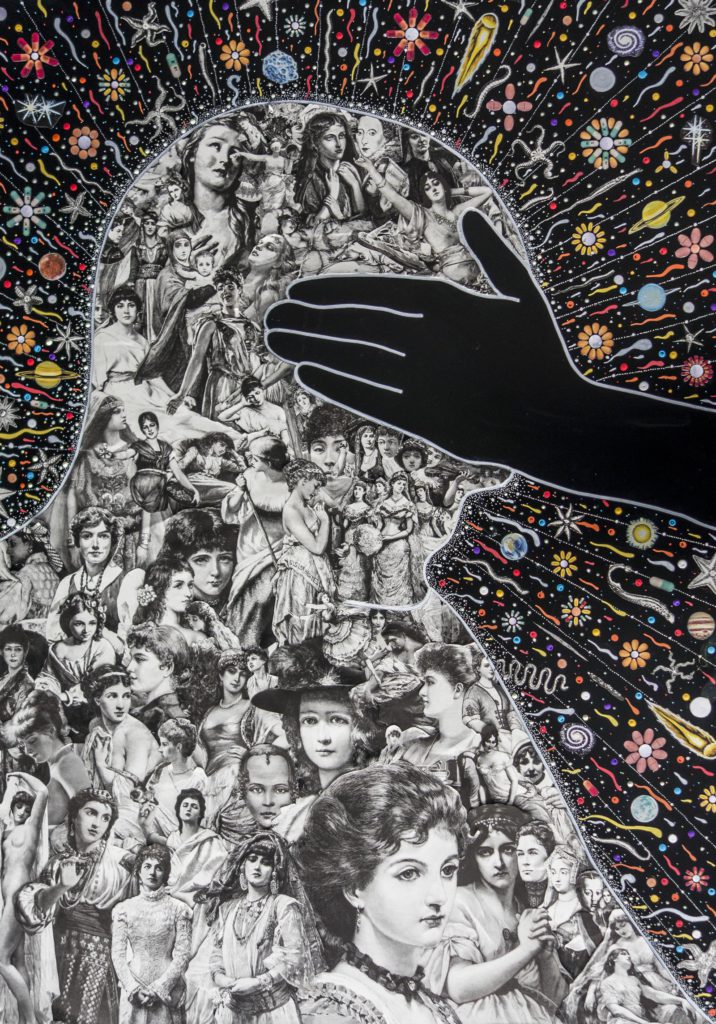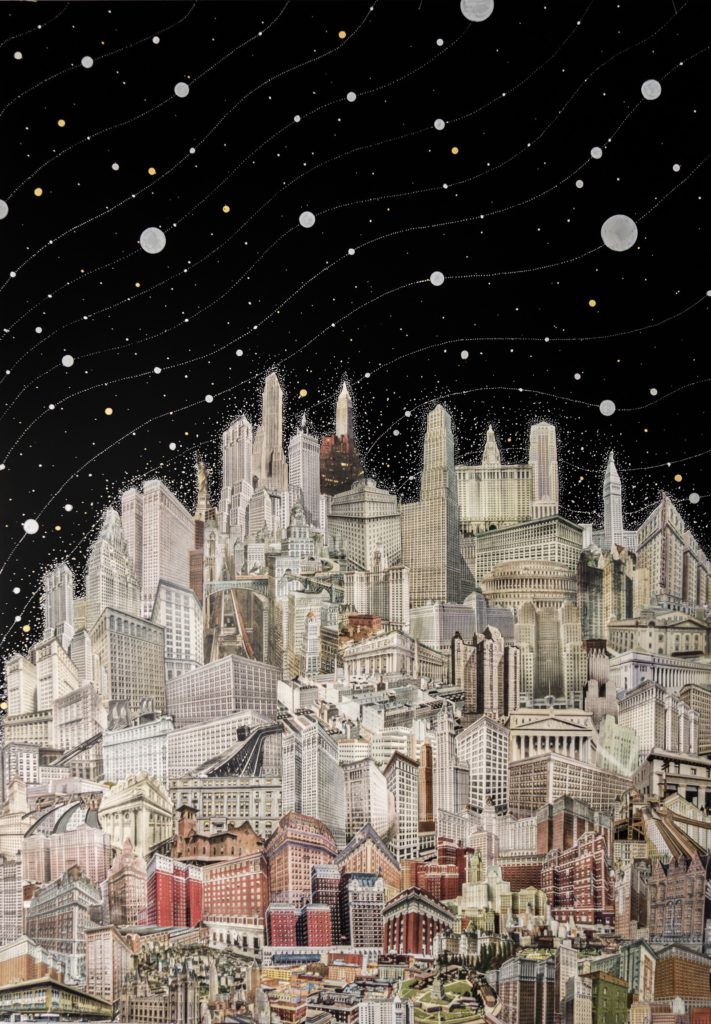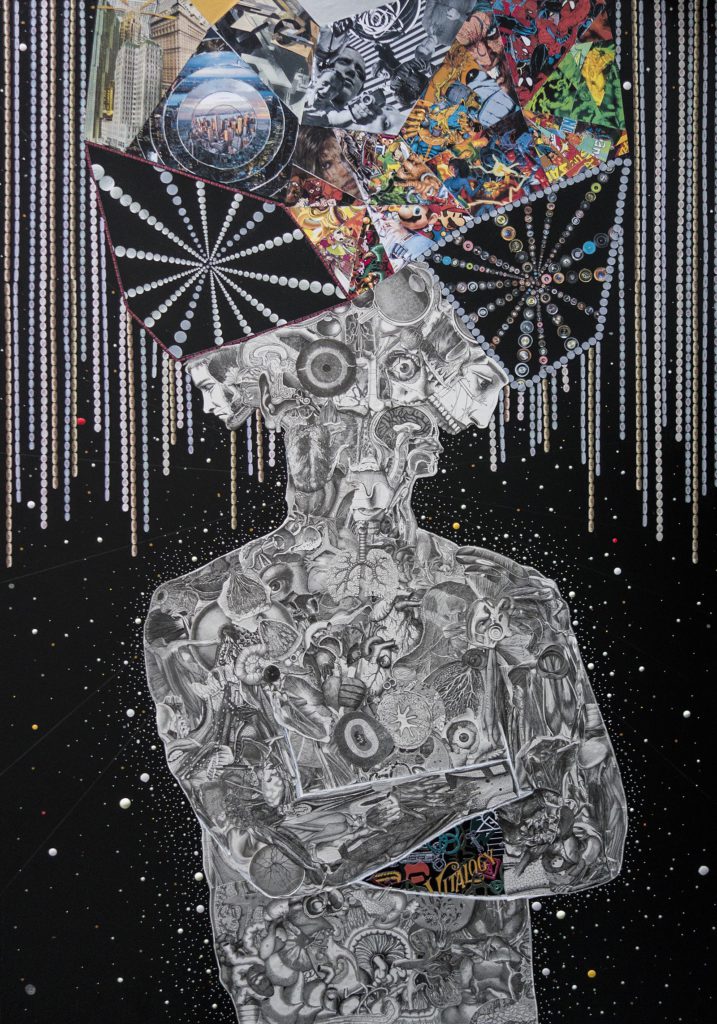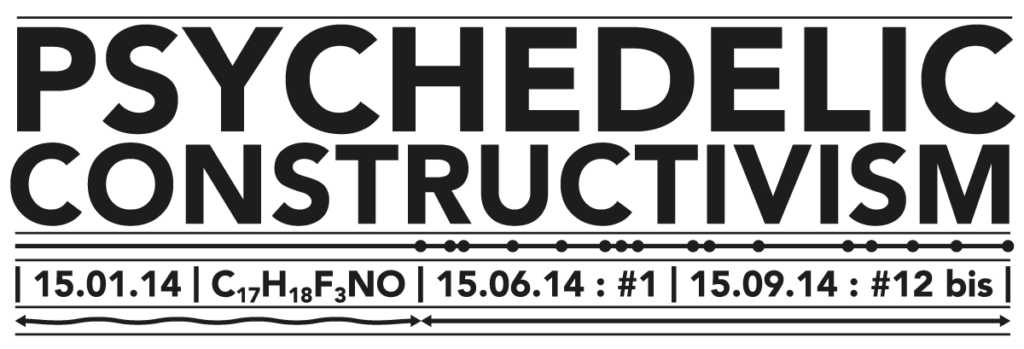
How does one get ‘into’ an image? William Burroughs’s advice for gaining access to the paintings in his 1992 exhibition, The Seven Deadly Sins, was to not just look at them, but to make them look at you, too. This process involved a freewheeling gaze and an attunedness to what might be called eye contact, when all of a sudden a part of what you’re observing winks back and then Bang! It all makes sense! To be precise, Burroughs wrote:
« Inhibit the reflex of reaching out to the picture with your eyes. Reverse direction, and let the picture reach out to you. If the rapport is there you will discover that some detail of the picture is looking at you – seeing you – coming alive in your presence. It may be that a face suddenly comes into focus, or perhaps a tiny figure, or a street scene. »
Thus the observer ‘creates by observing’.
There are also secrets aplenty to be unlocked in the Psychedelic Constructivism series, of which, at the time of writing, I have seen fifteen examples. But here’s the thing: I sense a reciprocal gaze most everywhere I look in these collages. Sometimes I’m definitely being stared at. Yet at others it’s the mind playing tricks, such as will happen when walking home in the dark, drunk or otherwise, along a country road, and it doesn’t matter so much whether you’re savaged by something, beaten up, or just plain old hit by a car.
Piece #14, which haunts me, is a prime example of the paranoia-inducing, and puts me in mind of a 1936 poem by the English surrealist, Hugh Sykes Davies, which haunts me too:
« in the stumps of old trees with rotten hearts, where the rain gathers and the laced leaves and the dead bird like a trap, there are holes the length of a man’s arm, and in every crevice of the rotten wood grow weasel’s eyes like molluscs, their lids open and shut with the tide. »
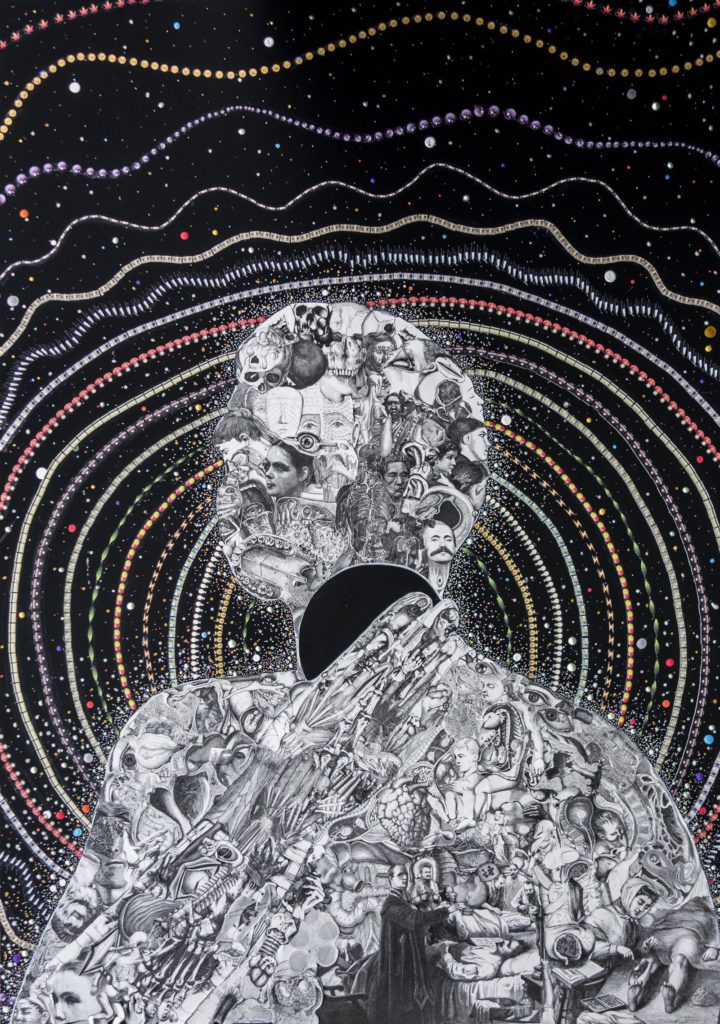

In other words, it’s all weasel’s eyes to me. At once I find these collages terrifying and charming and beautiful and more than a little erotic.
Of course, there’s a good reason for feeling like you’re being stared at. There very often are tiny figures, lots and lots of them, waiting to lock eyes, most obviously in piece #10, in which the body politic has never looked so glamorous. It’s like Leviathan meets Ziggy Stardust. Weasel’s eyes aplenty, relocated from fashion magazines or old books or whatever.
Ah! It seems more than a little vulgar bringing attention to the fact of these collages even being collages, of their being made from the cut-up and -out, because it sure as hell doesn’t look like it. They’re more akin to exquisite stills from a movie shot fifty years from now but set around the beginning of the twenty-first century. But then you catch a glimpse of something sweet and playful – for example, everyone’s favourite Italian plumber, Mario – and you realise that maybe they are manmade after all. There he is, lightening the mood of the otherwise very gruesome (but still glamorous) piece #4.
There are two points here. The first is that with the release of each new dose of psychedelic constructivism over the past few months there has been an accompanying ‘making of’ series of photographs. You can see little cut-out Mario resting on the table with little cut-out Link. You can see the initial outline of, say, Leviathan-cum-Ziggy. It’s almost like a how-to guide. All along we’ve been let in on the magic.
Thus, point two: this magic is not in any sense lessened by being so documented. Quite the opposite. In play is what Michael Taussig marked out as ‘the real skill of the practitioner’, namely ‘skilled revelation of skilled concealment’. We are dazzled twice over, and as a result twice as hard. Should you find yourself being stared at, then, bear this in mind: those weasel’s eyes are the artist’s.
You would do well to shudder.
Text by Morgan Daniels
